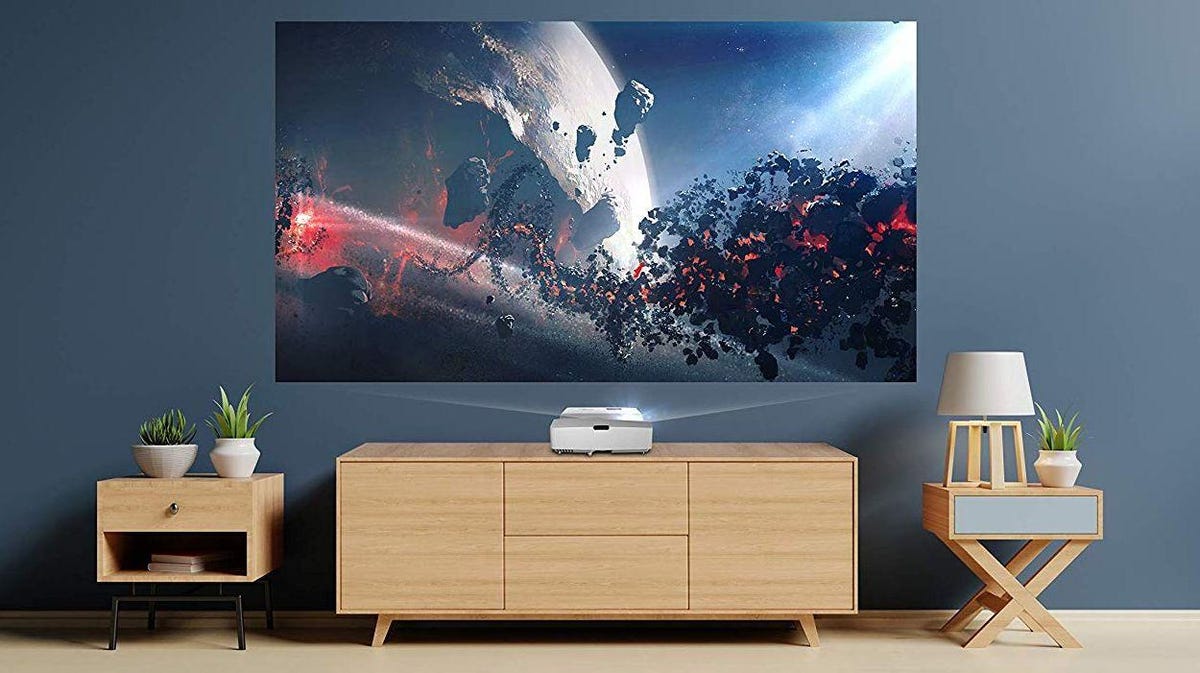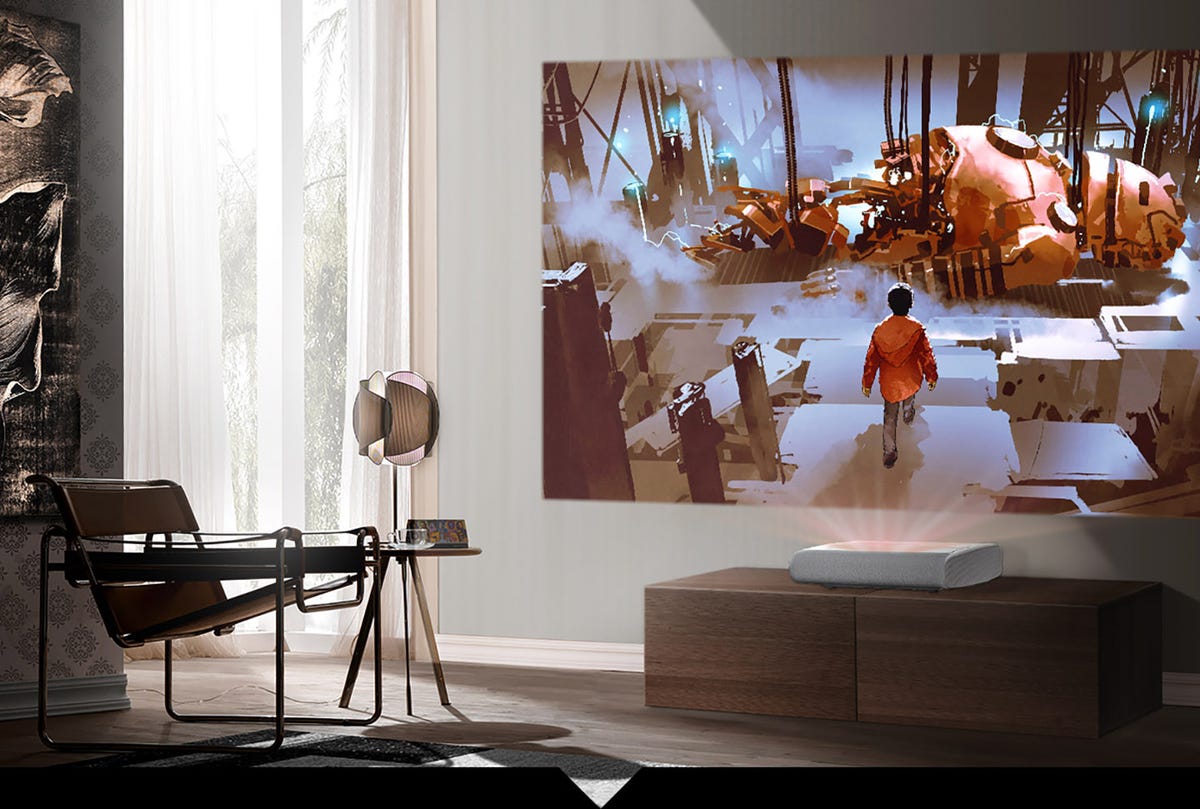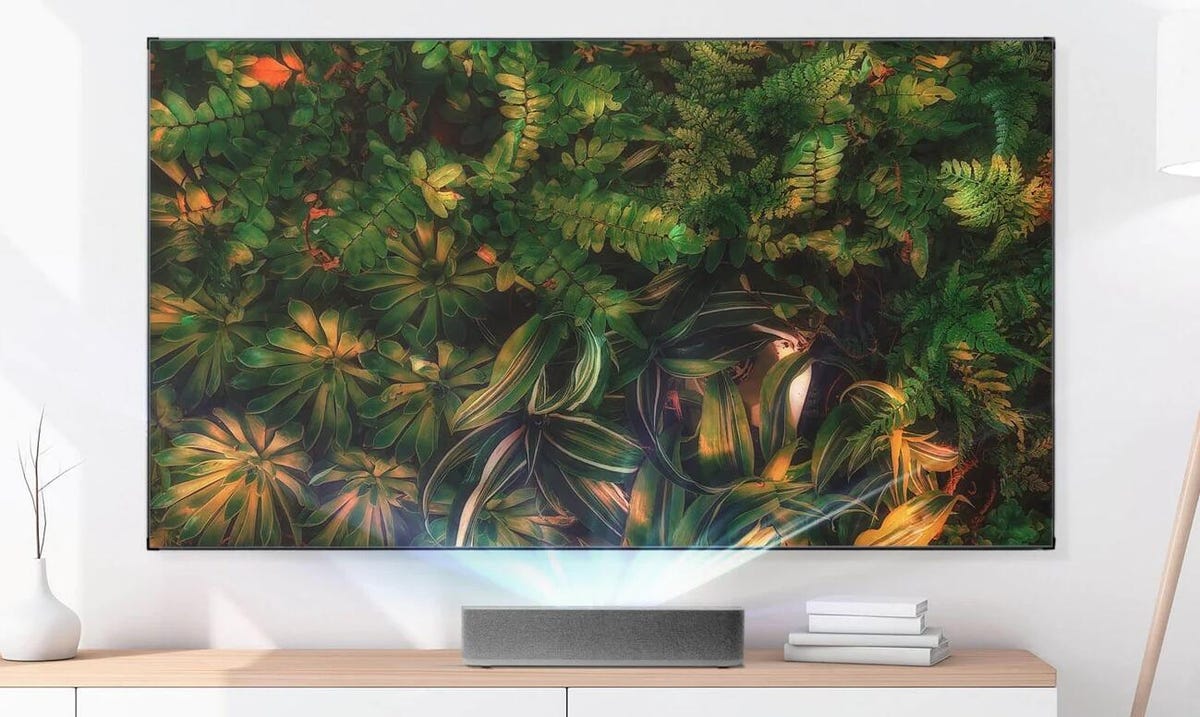The projector market doesn’t move particularly quickly. Most companies replace their models every few years and overall innovation is fairly slow. While there is certainly improvement over projectors from 10 to 20 years ago, that improvement is mild compared to the rapidly evolving TV market. That is, with one exception. The last few years has seen the rise in UST, or ultrashort throw, projectors. These short boxes don’t even look like projectors, nor do they install like one. Instead, they sit on a cabinet mere inches from a wall and are able to project 100-plus inch images.
With the promise of simple installations and impressive brightness specs, all wrapped with some elaborate marketing, UST projectors seem like the next big thing in the usually staid projector world. With companies both new and old coming out with models regularly, it sure seems like these weird projectors are the going to be huge.
However, they’re expensive. They’re expensive not just in terms of actual dollars, but especially when you compare them to more traditional projectors. Worse, the technology inside isn’t that different. In some key ways, it’s exactly the same. So are you paying more for similar or worse performance, and all for the promise of easier installation? Let’s take a closer look.
What’s a UST?

Projecting an image directly on a painted wall like this would ruin the picture.
Let’s first talk about those performance claims. All projector companies fudge their brightness numbers, sometimes a little, sometimes a lot. So, a 3,000-lumen projector is almost certainly not 3x brighter than a 1,000-lumen projector. Brighter? Probably, but it’s not as obvious a difference as the numbers would suggest.
Anyway, this is only of secondary importance to what is the main determinator of picture quality: contrast ratio. This ratio is the difference between the brightest and darkest parts of an image. No projector has as good a contrast ratio as OLED or even the better LED LCDs. All UST projectors use the same imaging chips as regular projectors, so in the best case their contrast ratios are going to be the same. The elaborate lenses required for UST projectors to work typically reduce the contrast ratio in the models we’ve seen, so the overall image is going to be worse than far cheaper non-UST projectors. While the laser and LED light sources in many UST projectors can produce deeper, richer colors than what many traditional projectors can produce, lots of projectors are available with LEDs or lasers, negating that advantage.
One of main claimed benefits of UST projectors is an easier install. They’re positioned as something you can just place on a low cabinet and within seconds get an image. Technically this is true, sort of. First, you need a cabinet that’s a very specific height. All UST projectors have a significantly upwards throw. The bottom of the image they create is roughly a foot above the top of the projector. If you want to create a 100-inch image, that’s going to be roughly 4 feet tall. Then add in the foot above the projector and the 6 inches (approximately) of the projector itself: The cabinet can only be around 3 feet tall before your image is wrapping onto the ceiling.
For most people, installation of modern projectors isn’t difficult. A shelf or stand behind a couch will suffice. If there’s no space for that, a traditional short throw on a coffee table will also work.




